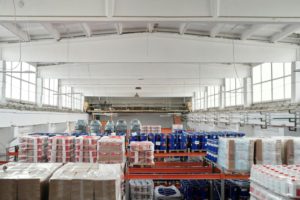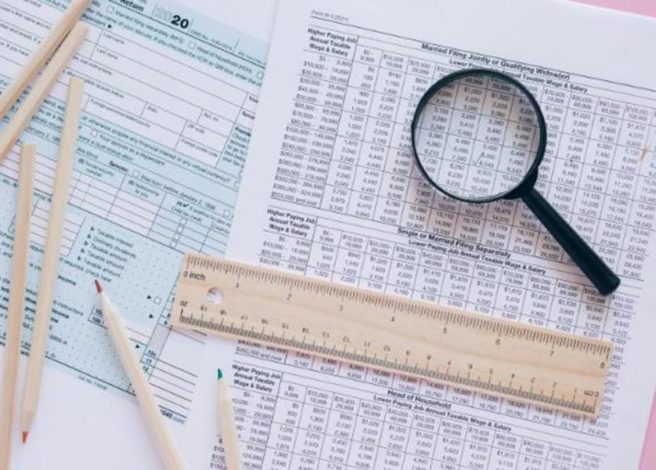At a Glance
- SKU rationalization helps food businesses cut warehouse chaos, free up cash flow, and streamline operations by eliminating underperforming packaging.
- The hidden costs add up: Stagnant inventory drains space, ties up money, and creates costly errors in daily operations.
- A proven framework is effective: Annual audits, ABC analysis, closet analogy assessments, and cross-functional teamwork guide smart SKU decisions.
- The payoff is real: Simplified packaging boosts efficiency, reduces costs, improves customer service, and creates growth capacity without costly expansion.
Imagine standing in your warehouse, surrounded by towers of plastic containers, mismatched lids, and packaging materials gathering dust. Does this sound familiar to you? You’re not alone. Every food business owner faces the same villain — the dreaded packaging proliferation monster that quietly devours warehouse space, ties up cash flow, and creates operational chaos. But here’s the good news: There’s a proven weapon to defeat this monster, and it’s called SKU rationalization.
This guide will help you streamline your packaging inventory. We’ll explain SKU rationalization and give you a step-by-step strategy. This can free up warehouse space, boost cash flow, and simplify your operations. You’ll learn how to identify which products to keep, consolidate, or eliminate entirely, plus discover the industry frameworks that successful food businesses use to optimize their packaging portfolios.
At Inline Plastics, we’ve been in the business of providing safe and trusted packaging solutions to keep fresh food protected for over 55 years. We know the value of strategic SKU rationalization (also referred to as “SKU consolidation” or “justification”). Today, we would like to share our insights with you.
And finally, we’re also going to talk about SLOBs. That’s right. SLOBs. It will make sense later. Now let’s get to it!
What Exactly Is SKU Rationalization? (And Why Should You Care?)
 Before we dive into the solution, let’s decode the terminology. A(n) SKU (Stock Keeping Unit) is your product’s unique ID. It’s like a social security number or license plate for your packaging. When you order a “TS24” container or an “SLP55,” that’s a(n) SKU. Note: These examples are specific to Inline Plastics. Other manufacturers’ SKUs will look different.
Before we dive into the solution, let’s decode the terminology. A(n) SKU (Stock Keeping Unit) is your product’s unique ID. It’s like a social security number or license plate for your packaging. When you order a “TS24” container or an “SLP55,” that’s a(n) SKU. Note: These examples are specific to Inline Plastics. Other manufacturers’ SKUs will look different.
Packaging SKU rationalization is the process of reviewing your packaging inventory. It helps you decide which products to keep, which to combine, and which to remove.
The Hidden Costs of Packaging Chaos
Some food business owners may not realize they’re losing money due to poor packaging SKU management. Here’s what’s probably happening in your operation right now:
The Space Vampire: It may come as no surprise to hear that packaging can take up a lot of storage space, and those slow-moving containers taking up prime warehouse real estate are a problem. They’re costing you money every single day. You’re paying for storage that holds unused packaging. This space should be reserved for fast-selling inventory that generates revenue.
The Cash Flow Inhibitor: Every dollar tied up in stagnant inventory is a dollar not working for your business. Multiply this by many underperforming SKUs, and you’ll see thousands of dollars in trapped capital.
The Operational Nightmare: Too many similar products confuse staff. This raises picking errors and complicates ordering. Your team wastes precious time managing complexity instead of driving growth.
Your Roadmap to Packaging Paradise

Now that you understand the problem, let’s dive into the solution. To successfully rationalize SKUs, a systematic approach is necessary. This should address both short-term issues and long-term objectives. Here’s your proven framework for transforming packaging chaos into streamlined efficiency:
Step 1: Conduct Your Annual Packaging Audit
Smart food businesses check their SKU performance at least once a year, usually during budget planning. But don’t wait for budget season if you’re experiencing:
- Warehouse space constraints
- Cash flow challenges
- Operational inefficiencies
- Upcoming lease renewals
Step 2: Apply the ABC Analysis Framework
Categorize your packaging SKUs using this helpful methodology:
- A Items: Your top 80% revenue generators (keep these flowing).
- B Items: The middle 10% (monitor closely).
- C Items: The bottom 10% (prime candidates for elimination). These are items that you could consider to be on the proverbial “chopping block.” Many are seasonal or specialty products. Before discontinuing them outright, consider whether they can be simplified — for example, by using more everyday packaging or consolidating formats — to reduce complexity while still meeting customer needs.
Step 3: The Closet Analogy Assessment
Think of your warehouse or storage area like your home closet. When you buy new clothes, but your closet is full, you have three options:
- Rent more closet space (expensive)
- Find another closet in your house (inefficient)
- Remove clothes that no longer fit or serve you (smart)
The same logic applies to your packaging inventory. Before expanding warehouse space, optimize what you already have.
Your SKU Rationalization Strategy
 With your assessment complete, it’s time to put your findings into action. This phase focuses on making strategic decisions about which SKUs to keep, consolidate, or eliminate. The goal is to create a simpler and more efficient packaging lineup. This will help meet your business goals and cut costs.
With your assessment complete, it’s time to put your findings into action. This phase focuses on making strategic decisions about which SKUs to keep, consolidate, or eliminate. The goal is to create a simpler and more efficient packaging lineup. This will help meet your business goals and cut costs.
Identify Consolidation Opportunities
Look for packaging products that serve similar functions. Maybe you’re carrying both green pens and purple pens (metaphorically speaking) — two different SKUs that accomplish the same goal (writing in a fun color). Select the option with the best features, pricing, or customer preference, and consolidate the volume into a single SKU.
Address the SLOB Factor
We told you we would end up here. Industry professionals use the term “SLOB” — Slow and Obsolete inventory to describe products that are just gathering dust and draining resources. Create a systematic approach to identify and eliminate SLOBs before they multiply. Tell those SLOBs that you’re tired of them not moving and taking up space, and that they need to hit the road!
Build Cross-Functional Teams
Successful SKU rationalization requires input from multiple departments:
- Operations: Which products create utilization or storage challenges?
- Sales: Which SKUs have upcoming customer changes or contract modifications?
- Finance: What’s the financial impact of write-offs versus clearance sales?
- Purchasing: How can we avoid ordering discontinued materials?
Your Business Transformation Awaits
The difference between businesses that thrive and those that merely survive often comes down to operational efficiency. SKU rationalization isn’t just about cleaning up your warehouse — it’s about:
- Maximizing cash flow through optimized inventory investments
- Improving customer service through streamlined operations
- Reducing operational costs through simplified processes
- Creating growth capacity without expensive expansions
SKU Ready for Success?
 Your packaging inventory should work as hard as you do. Every SKU should earn its place in your warehouse or storage area through consistent performance and customer demand.
Your packaging inventory should work as hard as you do. Every SKU should earn its place in your warehouse or storage area through consistent performance and customer demand.
The question isn’t whether you can afford to rationalize your SKUs — it’s whether you can afford not to. Your future self will thank you for taking action today.
Ready to transform your packaging chaos into profit-generating efficiency? Your SKU rationalization journey starts with a single step: Conducting that first honest inventory assessment.
The packaging monster has had its day. Now, it’s time for your comeback story.
Want to discover more ways to help your food business thrive? Explore our Learning Center for expert insights, industry best practices, and actionable strategies that drive real results.

